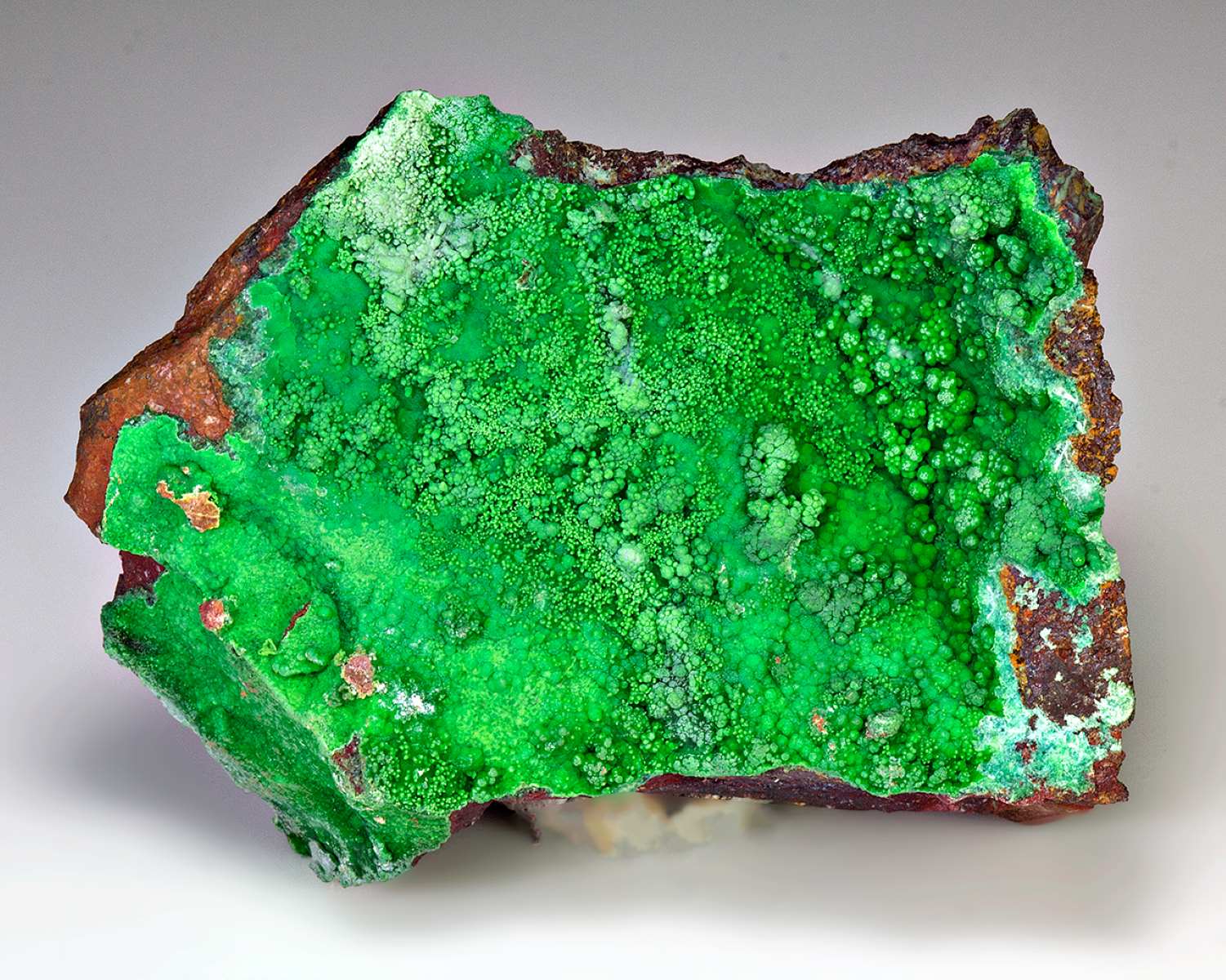
What is Conichalcite? Conichalcite is a vibrant green mineral that captures the imagination of geologists and collectors alike. Formed in the oxidation zones of copper deposits, this mineral is a rare treat for those lucky enough to find it. Its name comes from the Greek words for "dust" and "copper," hinting at its composition and appearance. Conichalcite is often found in the company of other minerals like malachite and azurite, making it a colorful addition to any mineral collection. Its striking green color is due to its copper content, and it often forms in botryoidal or globular shapes. Whether you're a seasoned mineralogist or just curious about the natural world, conichalcite offers a fascinating glimpse into the Earth's geological processes.
Key Takeaways:
- Conichalcite is a vibrant green mineral with unique properties, often found in copper deposits. It's used in jewelry, education, and scientific research, and can even fluoresce under UV light.
- This fascinating mineral, found in various countries, is prized by collectors and has metaphysical properties. It can also indicate the presence of copper deposits and is used in decorative items and geological research.
What is Conichalcite?
Conichalcite is a fascinating mineral that captures the interest of geologists and collectors alike. Its vibrant green color and unique properties make it a standout in the world of minerals. Let's dive into some intriguing facts about Conichalcite.
- Conichalcite is a secondary mineral, meaning it forms from the alteration of primary minerals.
- It belongs to the arsenate mineral group, which includes minerals containing arsenic.
- The name "Conichalcite" comes from the Greek words "konis" (dust) and "chalkos" (copper), referring to its copper content.
- Conichalcite typically forms in the oxidation zones of copper deposits.
- Its chemical formula is CaCu(AsO4)(OH), indicating it contains calcium, copper, arsenic, and hydroxide.
- The mineral often appears in botryoidal (grape-like) or globular formations.
- Conichalcite has a Mohs hardness of 4.5, making it relatively soft.
- It exhibits a vitreous to dull luster, depending on the specimen.
- The mineral's color ranges from bright green to yellow-green, due to its copper content.
- Conichalcite is often found alongside other copper minerals like malachite and azurite.
Where Can You Find Conichalcite?
Conichalcite is not just a pretty face; its geographical distribution is equally fascinating. Let's explore where you can find this vibrant mineral.
- Conichalcite is commonly found in the United States, particularly in Arizona and Nevada.
- Significant deposits also exist in Mexico, especially in the state of Durango.
- Chile is another hotspot, with notable finds in the Atacama Desert.
- In Europe, Conichalcite has been discovered in Germany and Greece.
- Australia boasts deposits in the Broken Hill region.
- Namibia in Africa is known for its high-quality Conichalcite specimens.
- Russia has also reported occurrences, particularly in the Ural Mountains.
- China is another country where Conichalcite has been found, especially in the Hunan Province.
- Morocco is famous for its vibrant green Conichalcite specimens.
- Peru has also contributed to the global supply of this mineral.
Uses and Applications of Conichalcite
While Conichalcite is primarily a collector's item, it has some interesting uses and applications. Let's take a closer look.
- Conichalcite is highly prized by mineral collectors for its vibrant color and unique formations.
- It is often used in educational settings to teach students about secondary minerals and copper deposits.
- Some people believe that Conichalcite has metaphysical properties, such as promoting emotional balance and healing.
- Jewelry makers occasionally use Conichalcite in custom pieces, although its softness limits its practicality.
- The mineral can serve as an indicator of copper deposits, aiding in mining exploration.
- Conichalcite is sometimes used in decorative items, like mineral displays and art pieces.
- It can be a valuable addition to geological research, helping scientists understand mineral formation processes.
- Conichalcite is also used in museums to showcase the diversity of mineral species.
- Some collectors use Conichalcite to create mineral gardens, combining it with other colorful minerals.
- The mineral's unique properties make it a subject of scientific studies, particularly in the field of mineralogy.
Interesting Facts About Conichalcite
Beyond its basic properties and uses, Conichalcite has some truly interesting aspects. Here are some more captivating facts.
- Conichalcite can fluoresce under UV light, displaying a greenish glow.
- The mineral is often found in microcrystalline form, making it a favorite among micromount collectors.
- Conichalcite can alter to other minerals, such as olivenite, under certain conditions.
- It is sometimes confused with other green minerals like adamite and austinite.
- Conichalcite specimens from different locations can vary significantly in appearance.
- The mineral's formation process involves the oxidation of arsenic-bearing copper minerals.
- Conichalcite is often associated with limonite, a common iron oxide.
- The mineral can form pseudomorphs, where it replaces another mineral while retaining the original's shape.
- Conichalcite has been used in mineralogical studies to understand arsenate mineral formation.
- The mineral's vibrant color makes it a popular choice for photography and mineral exhibitions.
The Final Word on Conichalcite
Conichalcite, a fascinating mineral, offers a lot to learn. Its vibrant green color, due to copper content, makes it a favorite among collectors. Found in places like the USA, Mexico, and Greece, it forms in oxidized zones of copper deposits. This mineral isn't just pretty; it also tells geologists about the environment where it formed.
While not widely used in industry, conichalcite's beauty and scientific value can't be ignored. It often appears alongside other minerals like malachite and azurite, adding to its appeal. Whether you're a collector, a student, or just curious, conichalcite provides a glimpse into the Earth's geological processes.
So next time you see a piece of conichalcite, remember it's more than just a rock. It's a piece of Earth's history, waiting to be explored.
Frequently Asked Questions
Was this page helpful?
Our commitment to delivering trustworthy and engaging content is at the heart of what we do. Each fact on our site is contributed by real users like you, bringing a wealth of diverse insights and information. To ensure the highest standards of accuracy and reliability, our dedicated editors meticulously review each submission. This process guarantees that the facts we share are not only fascinating but also credible. Trust in our commitment to quality and authenticity as you explore and learn with us.


